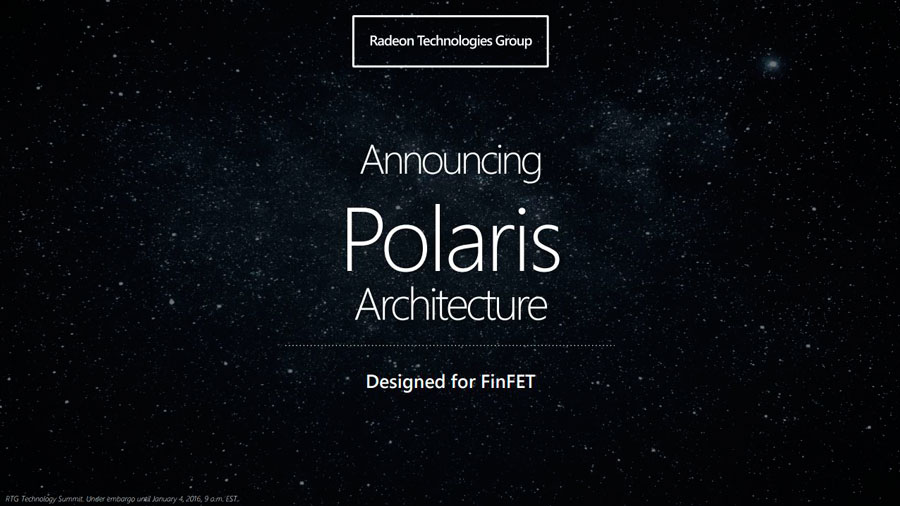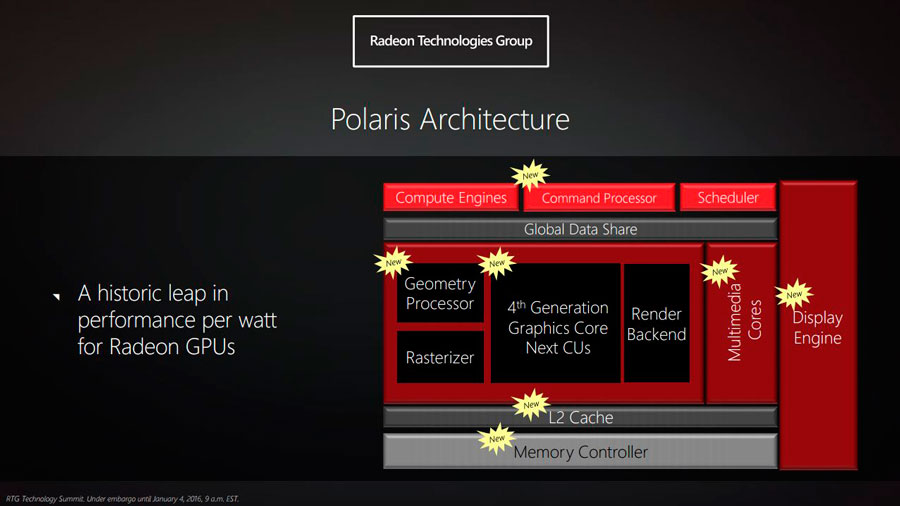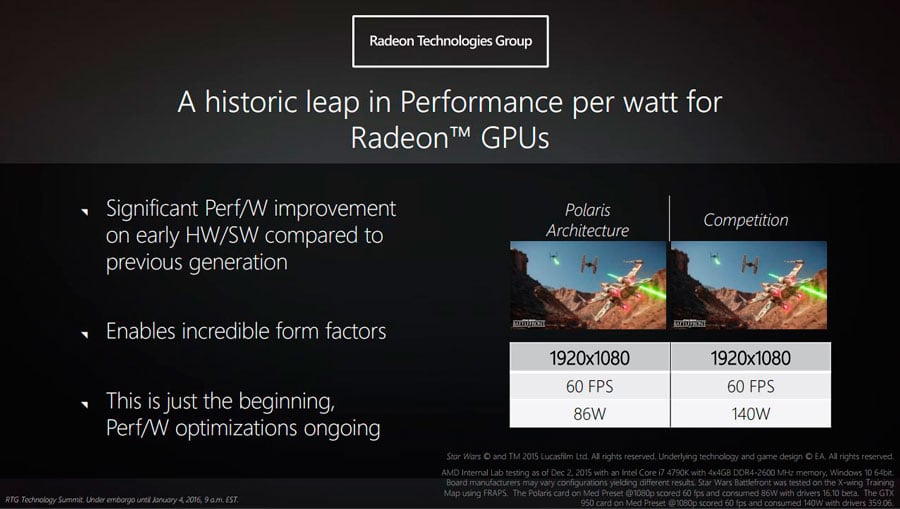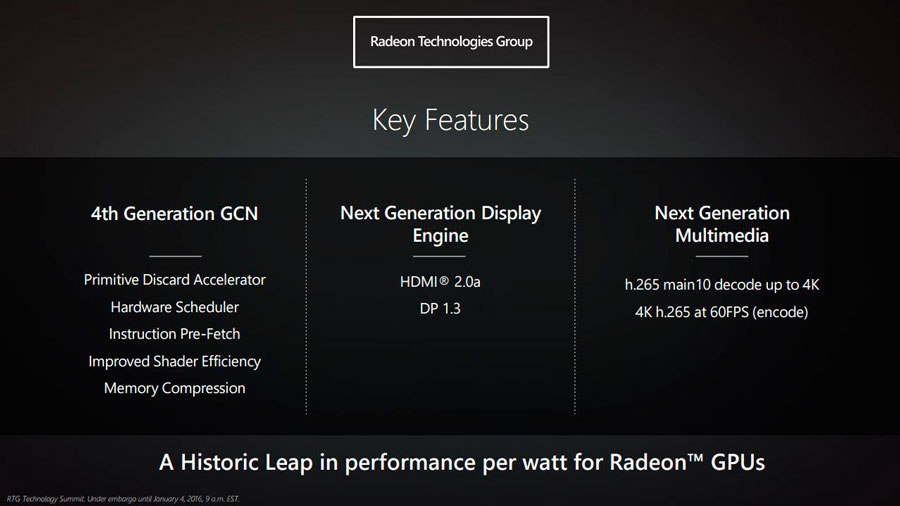To Go Head to Head With Nvidia’s 16nm FinFET based Pascal GPU
AMD Radeon Technologies, the newly announced team of AMD Radeon experts under the leadership of Raja Koduri, just unveiled the AMD Polaris Architecture. The latest architecture of AMD set to battle Nvidia’s Pascal Architecture this year. While both are based on the FinFET multi-gate technology, AMD took the advantage to leap at 14nm manufacturing process as opposed to Nvidia’s 16nm FinFET Pascal.
Gone are the days of Planar gate manufacturing process- and FinFET is the way to go. This is extremely important in today’s PC gaming scene, where 4K is already embraced by some of the masses and VR is looming around the corner, needing faster, yet more efficient GPUs. FinFET did this a while back with Intel’s IvyBridge platform, allowing performance gains with less power required – enabling the manufacturers to create better products and focus the remaining power margins to other things instead.
This is the case with AMD’s Polaris Architecture – especially the Polaris based GPU demo’ed at CES 2016 against the Nvidia GTX 950 where it reigned supreme at 86W on Star Wars: Battlefront, whereas the GTX 950 system featured 140W of power consumption. The test limits both cards at 60 FPS, so detailed power savings and performance when every settings are maxed out and frame capping is disabled are no where to be found. The unknown Polaris based Graphics Card tested is a GDDR5 variant, and is most probably a budget part unless capping the FPS is their reason not to shed light about its real performance which might be even higher.
Among the improved performance per watt figures, there are more to be discussed with when it comes to Polaris’ supported features. That includes HDMI 2.0a and DisplayPort 1.3 support, h.265 decoding, and 4K h.265 encoding. Basically, the graphics card will support the standards of tomorrow’s multimedia needs.
This is a historic leap for AMD indeed, as moving from 28nm to 14nm with FinFET manufacturing process is not a joke. Hopefully, this new GCN architecture will put AMD back on the track, where competition is highly needed especially when DirectX 12 games and VR is just around the corner. To learn more about the AMD Polaris, read the PR below:
The world’s first public showcase of 14nm FinFET PC GPU technology promises more than double the performance per watt over previous generations; now sampling to OEMs
Manila, Philippines — January 5, 2016 – AMD (NASDAQ: AMD) provided customers with a glimpse of its upcoming 2016 Polaris GPU architecture, highlighting a wide range of significant architectural improvements including HDR monitor support, and industry-leading performance-per-watt. AMD expects shipments of Polaris architecture-based GPUs to begin in mid-2016.
AMD’s Polaris architecture-based 14nm FinFET GPUs deliver a remarkable generational jump in power efficiency. Polaris-based GPUs are designed for fluid frame rates in graphics, gaming, VR and multimedia applications running on compelling small form-factor thin and light computer designs.
“Our new Polaris architecture showcases significant advances in performance, power efficiency and features,” said Lisa Su, president and CEO, AMD. “2016 will be a very exciting year for Radeon™ fans driven by our Polaris architecture, Radeon Software Crimson Edition and a host of other innovations in the pipeline from our Radeon Technologies Group.”
The Polaris architecture features AMD’s 4th generation Graphics Core Next (GCN) architecture, a next-generation display engine with support for HDMI® 2.0a and DisplayPort 1.3, and next-generation multimedia features including 4K h.265 encoding and decoding.
AMD has an established track record for dramatically increasing the energy efficiency of its mobile processors, targeting a 25x improvement by the year 2020 .
Supporting Resources
- See the new Polaris GPU architecture demo on YouTube
- Become a fan of AMD on Facebook
- Follow AMD on Twitter
- Learn more about AMD Radeon
- Learn more about Gaming with AMD
For more than 45 years, AMD has driven innovation in high-performance computing, graphics, and visualization technologies ― the building blocks for gaming, immersive platforms, and the datacenter. Hundreds of millions of consumers, leading Fortune 500 businesses, and cutting-edge scientific research facilities around the world rely on AMD technology daily to improve how they live, work, and play. AMD employees around the world are focused on building great products that push the boundaries of what is possible. For more information about how AMD is enabling today and inspiring tomorrow, visit the AMD (NASDAQ: AMD) website, blog, Facebook and Twitter pages.




